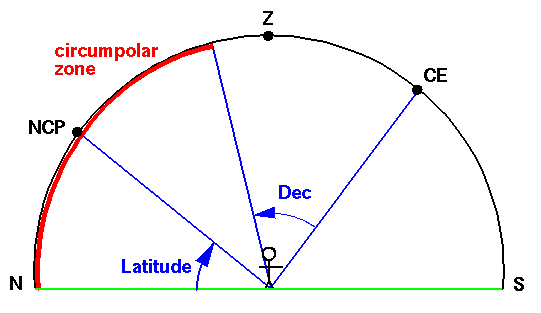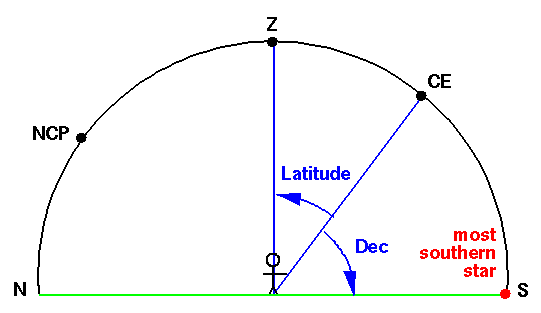
dec > 90°-latitude.

(In the diagram the black half-circle is the meridian which runs from the north point on the horizon [N], through the north celestial pole [NCP], through zenith [Z], and ends on the south point on the horizon [S]. As usual, the altitude of the NCP is the observers latitude. CE shows where the celestial equator crosses the meridian.)
The most southern star that can be seen, culminates on the southern horizon. Equivalently, to see a star its declination must be greater than:
dec > -(90°-latitude)

(In the diagram the black half-circle is the meridian as above. As usual, the celestial equator misses zenith by the observers latitude.)
So in the case of CSB/SJU at latitude=45°, stars with dec greater than 45° are circumpolar, stars with dec more negative than -45° never rise above our horizon.
Finally note that by using diagrams like the above, you can find the altitude of a star when it culminates.